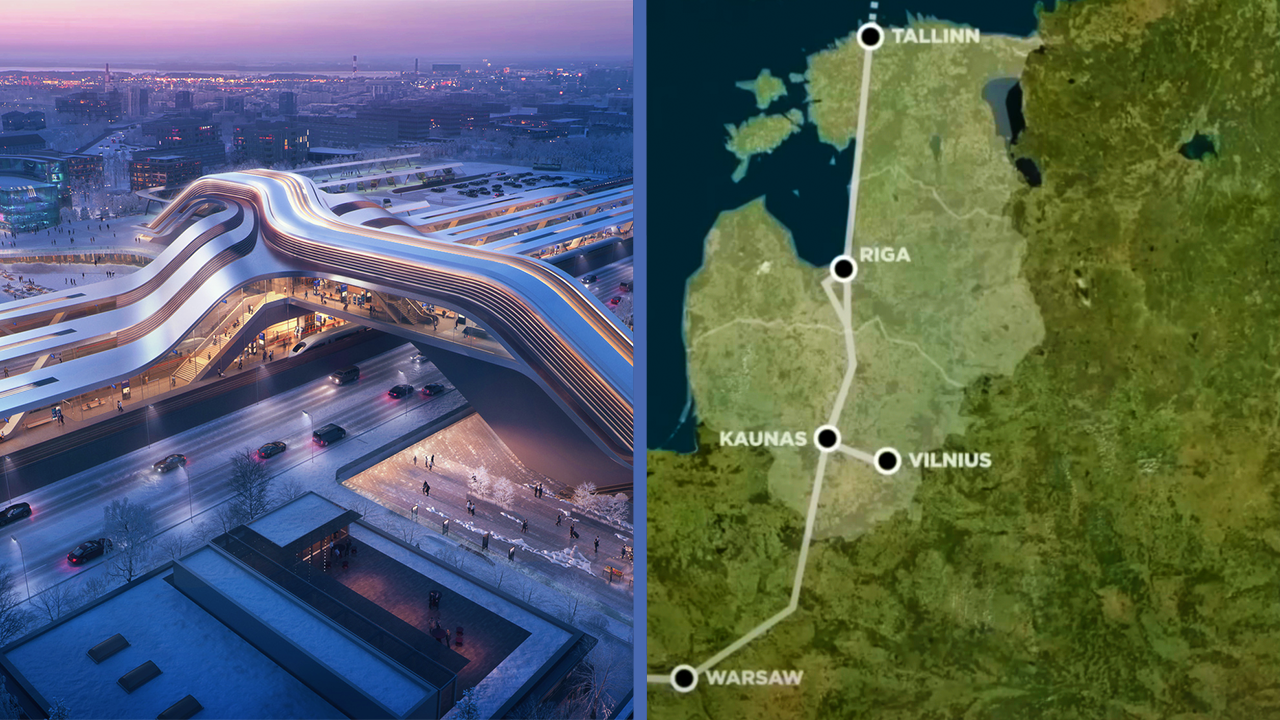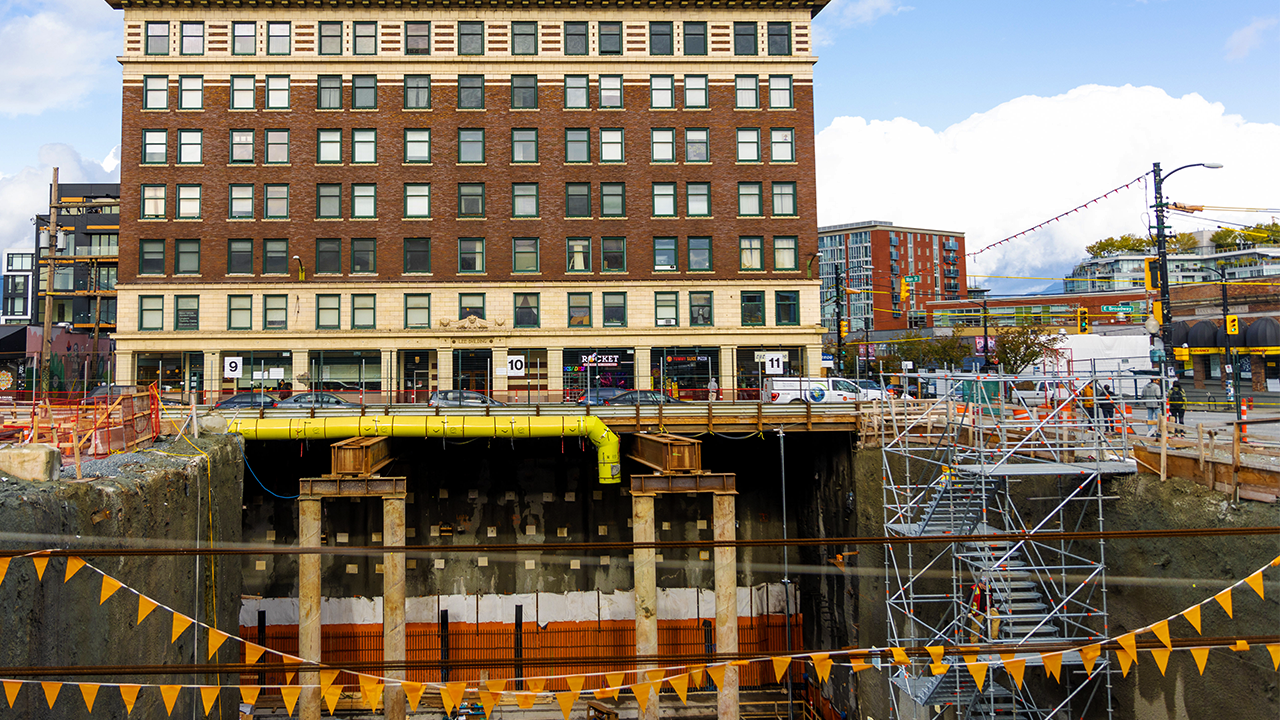Why Russia Tried to Block Europe's New Canal
- Youtube Views 4,312,824 VIDEO VIEWS
Video hosted by Fred Mills. This article and video contain paid promotion by Brilliant.
TO THE NORTH of Poland is the Baltic Sea, an important waterway that boasts several key ports and a point of connection for many surrounding countries.
But over the past decade, the tiny sliver of Russian land on the Baltic coast known as Kaliningrad has been causing a bit of tension with its neighbours.
You see for ships to access a key port in Poland, they had to first pass through Russian-controlled waters. Something that, after years of problems, Poland didn’t want to have to rely on anymore. So starting in 2019, Polish officials built the Vistula Canal.
At over a kilometre long, the USD $450 new channel now allows Polish ships to avoid passing through the Russian strait. But Russia was not happy about its construction. In fact it even tried to stop the canal from being built at all.
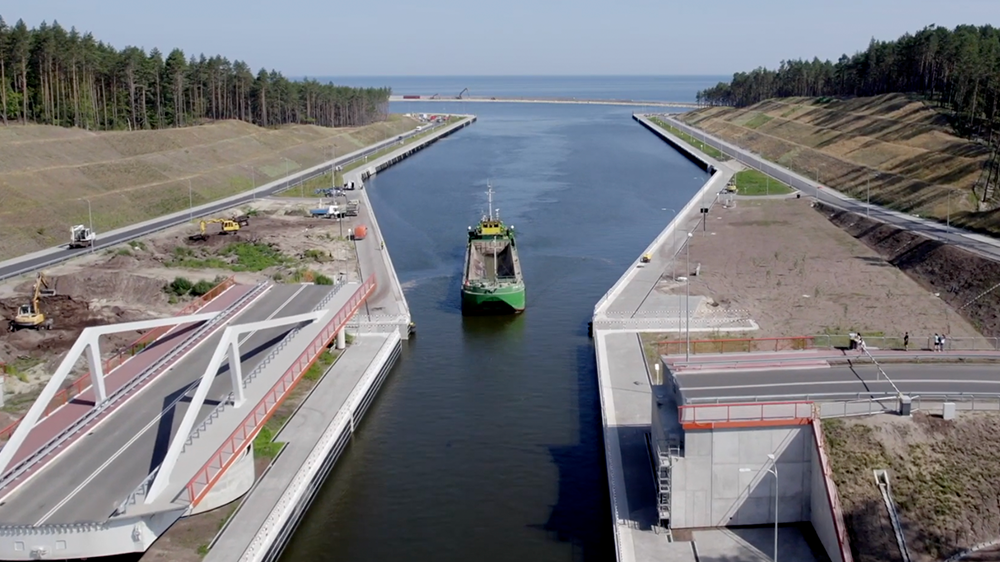
Above: A ship passes through the Vistula Canal. Image courtesy of Besix, GRUPA NDI, and Maritime Office in Gdynia.
You may remember back in 2021 when a news story about a container ship went viral. For six days the now infamous Ever Given halted trade through the Suez Canal and impacted the global supply chain.
While temporary, the incident highlighted the importance of canals to the world’s economy and shipping industry. These routes provide more direct shortcuts through land masses and cut down time and costs when it comes to trade, and in the case of the new Vistula Canal in Poland, they can also be a strategic move.
Before its construction, ships headed towards the Polish port of Elblag had to take a detour through the Baltiysk Strait off Kaliningrad, and because Russia controlled this area it often shut the strait down or charged ships to go through, making Poland reluctantly dependent on its not-so-favourite neighbour.
So in 2019 Poland began construction on a canal through a stretch of land known as the Vistula Spit. The new canal would decrease the country’s reliance on Russian permissions, while also creating a faster and shorter route that would ultimately save time and money.
That freedom from Russian influence became especially important following the shocking invasion of Ukraine in 2022.
Workers began by excavating the two-kilometre wide stretch of land which encloses the lagoon.
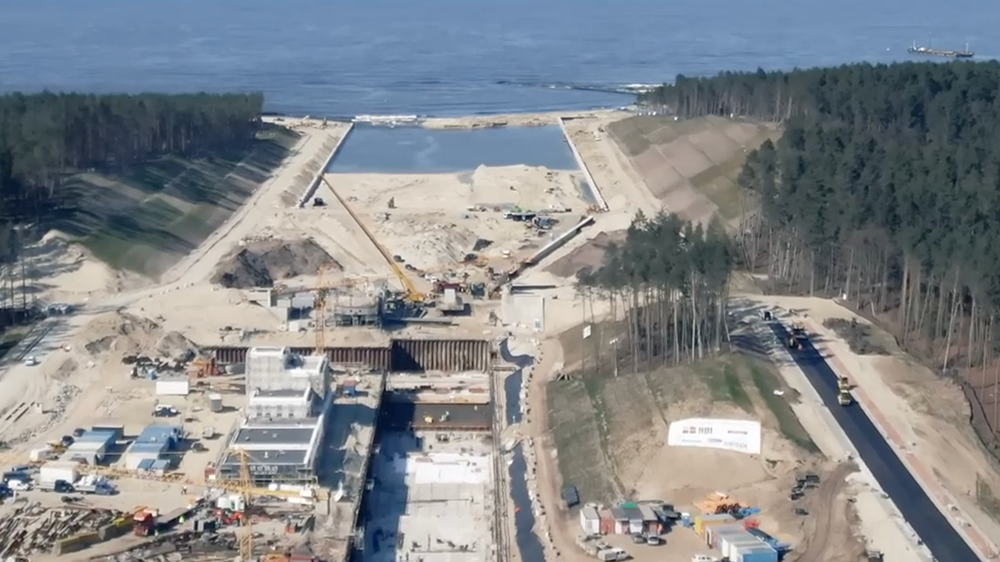
Above: Workers begin excavation of the Vistula Canal. Image courtesy of Besix, GRUPA NDI, and Maritime Office in Gdynia.
Once cleared, the remaining slopes were strengthened with a geogrid synthetic material and topsoiling in order to prevent erosion.
The excavated sand was first stored in heaps. But instead of being carried off, it was used to create a five kilometre wide artificial island and a new nesting ground for birds.
As dredging continued, construction of the breakwaters began to take shape. These are permanent structures built out into the water to hold back swells and tides.
Workers drove in sheet piles near the base; a type of vertical steel retaining wall. To strengthen the structures, over 10,000 concrete blocks ranging from about two to nearly 10 tonnes in weight were interlocked. These blocks are used on all sorts of coastal infrastructure, but a special design was used for the Vistula Canal.
Unlike its predecessors, each block had a hole in the middle to reduce water pressure and increase stability throughout the wall. It also enabled faster and more accurate installation with up to 100 blocks per day put into place. When completed, the western side reached over 500-metres long, with the eastern over a kilometre.
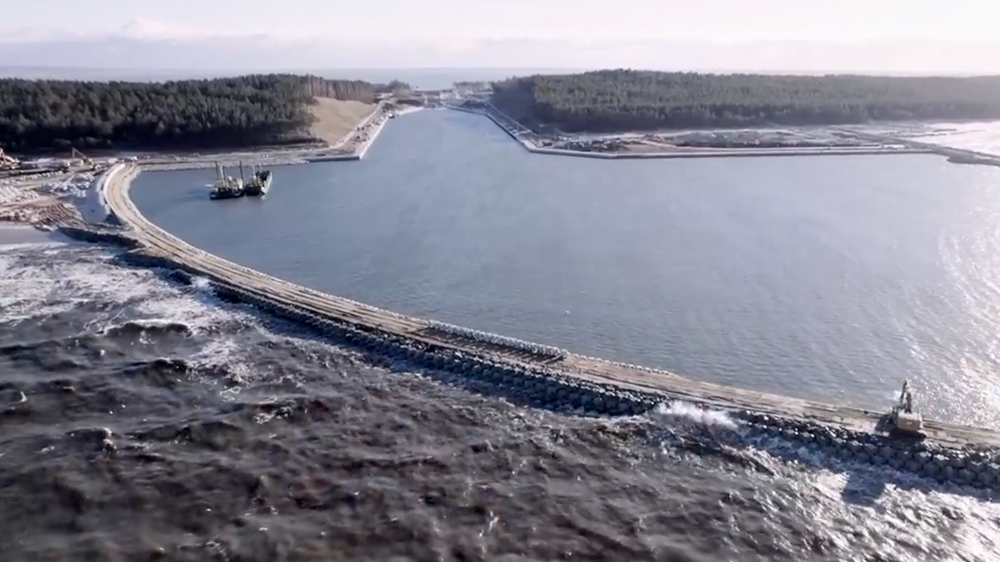
Above: The breakwaters built near the Vistula Canal. Image courtesy of Besix, GRUPA NDI, and Maritime Office in Gdynia.
Because the bay and lagoon have different water levels, the canal's lock serves as a sort of boat elevator that raises and lowers the water so ships can pass through the channel smoothly.
The Vistula Canal lock is a 270-metre system of four gates each weighing about 160 tonnes. Each one moves along a set of rails using a series of ropes. Once a boat enters the lower part of the lock, the first of these steel gates closes behind it, stopping any water from exiting the chamber. When a section within the upper gates open, water flows into the lower section raises the ship to the height of the upper portion of the canal. After it reaches an equal level, the next set of gates open and the ship finally goes through to the other side.
But of course, ships aren’t the only thing that need to move along the channel. The Vistula Canal also had to take into account another type of traffic: cars.
The solution was a road system consisting of not one but two swing bridges over the lock.
Commonly built in canals, swing bridges typically rotate about 90 degrees around a centre point. When a vessel needs to travel through at the Vistula, each bridge swings open alternately.
Ever since the canal opened in 2022, the Polish government has celebrated it as a success. Russia on the other hand, was not so happy.
According to Polish government officials, Russia did not want to allow for their strengthened independence and sovereignty that the project would bring.
For years, Russian news outlets have published reports criticising the project. They cited environmental concerns alleging the project would drive local species of birds and fish towards extinction. They also claimed it was essentially a waste of money.
After all, the canal is not yet deep enough to allow large cargo ships to pass through and therefore the investment put in would never reap the returns. Other Russian narratives included how the canal was a direct militaristic threat as well as an illegal project under European Union regulations.
The Polish government has denied these accusations, saying the Kremlin is pushing false propaganda.
In a report by The Guardian, ecological experts agreed stating the canal would only have minimal environmental impact.
As for the economic gains, only about 12 medium ships can go in the canal daily. According to a study by a Polish university, it would take 650 years to make a profit. But the port will reportedly be deepened in the future to allow for larger ships.
In the end, despite Russia’s multiple attempts at stopping the Vistula Canal, they ultimately failed.
In a seemingly symbolic move, the canal’s opening coincided with the anniversary of when Soviet Troops invaded Poland during World War II. Today the Vistula Canal stands not only as a new pathway for ships, but as a lasting symbol of independence for Poland.
This video contains paid promotion for Brilliant. Head to brilliant.org/TheB1M/ for a 30-day free trial and the first 200 people will receive 20% off their annual subscription.
Narrated by Fred Mills. Special thanks to Besix, GRUPA NDI, and Maritime Office in Gdynia. Footage and images courtesy of Besix, GRUPA NDI, and Maritime Office in Gdynia, ABC News, sara.liz.joy, Besix, janiejaffe, bradmilison, Poland Daily Live and Sputnik News.
We welcome you sharing our content to inspire others, but please be nice and play by our rules.
